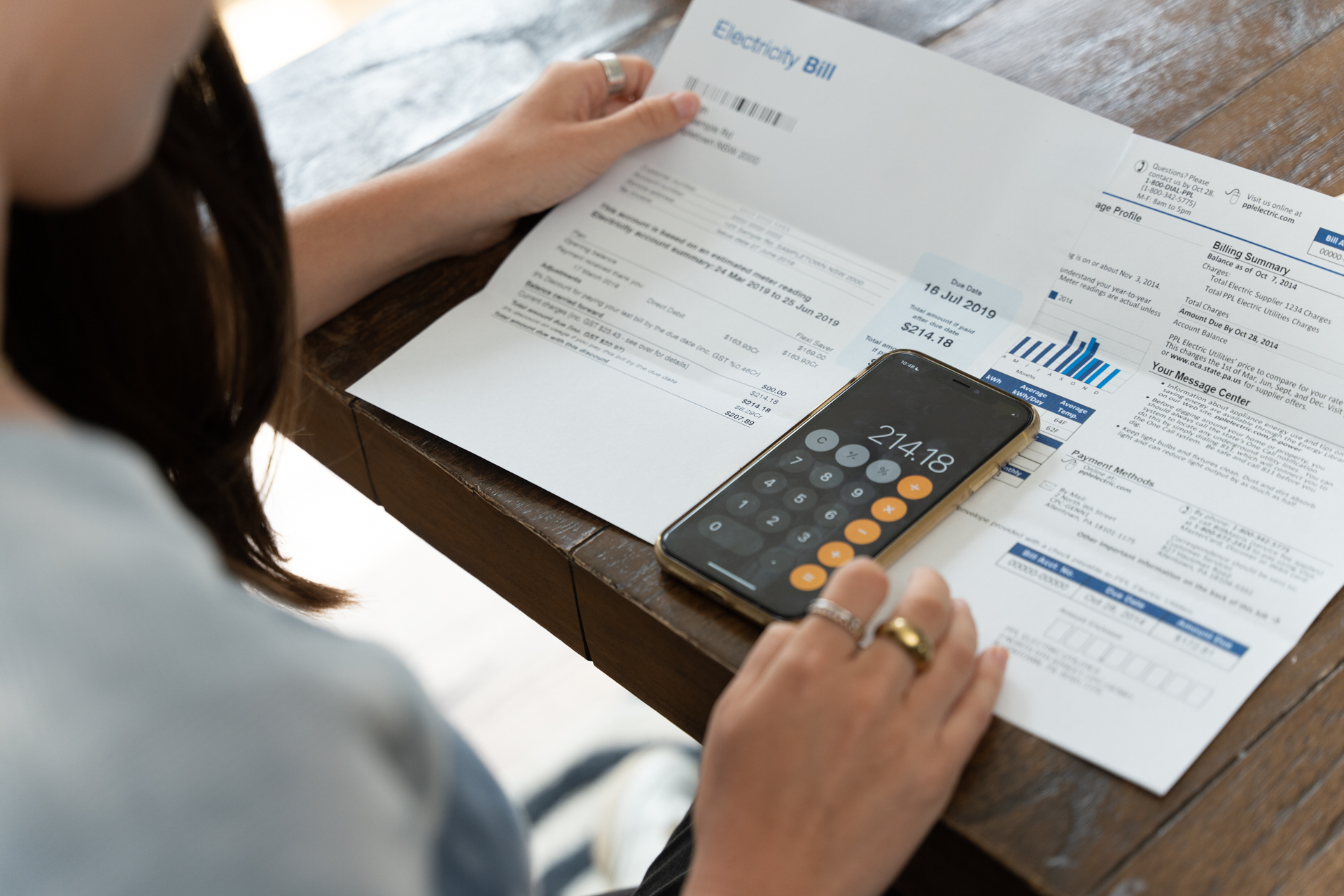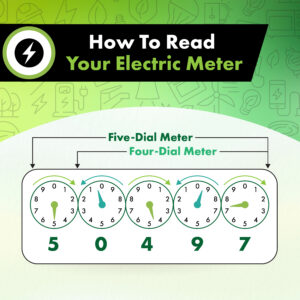Understanding Your Energy Bill
12/10/2022
According to a statewide 2022 Virginia Energy Sense survey, 75% of consumers say saving money on their electric bill is a very important reason to conserve energy. But to save energy, you first need to understand how you’re using it.
From the power lines through your electric meter and into your home, the energy that fuels your everyday makes quite the journey. But when that journey is translated into dollars and cents on your utility bill, what does it all mean? Read on to learn more about measuring your energy usage, understanding your energy bill, and how to read your electric meter.
Electricity Usage
First, we need to understand the unit used to measure electricity usage: kilowatt-hours, which is commonly abbreviated as kWh. Kilowatt-hours are used to measure your electricity usage over time. For example, using 1,000 watts of electricity for one hour means that you used 1 kWh. How does that translate to your everyday life? If you’re using a 200-watt slow cooker for five hours, that would use 1 kWh. On average, that costs about $0.12 according to the U.S. Department of Energy.
Depending on your provider, the bill will usually list the total kWh under the usage or billing summary section. It’s not unusual to see significantly different usage amounts depending on the season. For instance, if your home uses gas for heat in the winter and electricity for air conditioning in the summer, your energy bill will be higher in the summer.
Our partners have handy tools to help estimate your energy usage. The Department of Energy has a cost calculator so you can get an idea of what your appliances use each day and over a whole year.
Itemized Power Charges
Your bill will break down the main costs for you. The highest charge will likely be from your monthly kWh usage. Here are some other common charges you’ll see on your electric bill:
- Distribution Service: Consider this the delivery charge. This is the cost for the delivery of electricity to your home or business through wires and other local utility equipment. It includes a base charge per month, plus the distribution charge per kWh used.
- Electricity Supply Service: These are the charges for the generation and transmission of electricity, including the cost of fuel used to produce that power.
- State and Local Consumption Taxes: These are taxes based on the amount of energy you used.
- Local Utility Tax: This is a tax imposed on energy services by local ordinances.
These costs typically fluctuate month-to-month based on your usage. The distribution service charge, electricity supply service charge, and state and local taxes rise and fall with how much electricity you use. So regardless of fees, the more energy you use, the more charges you’ll see on the bill.
However, in Virginia, energy providers can use a rate schedule. That means your electric company will adjust its rates at different parts of the year. For example, the same power you use from June to September would cost you more than from October to May. Ask your energy provider about its rate schedules or check your provider’s website. Dominion Energy, for example, explains its rate schedules on its Residential Rates page.
If you’re having trouble affording your monthly utility bills, you can look into budget billing options. That’s a plan that allows you to set monthly payments on a predictable schedule based on your previous 12 months of usage. Your amount due does not reflect your actual energy usage. Keep in mind that when you cancel services, you will owe the total balance of your account.
How To Read Your Electric Meter
Your electric meter measures your electricity usage in kWh. Nowadays, many homes have digital or smart meters. Utility companies are currently installing these on homes with older meters across Virginia. According to the companies, smart meters offer improved services. They can pinpoint power outages and enable the company to read your meter remotely. This updated technology also makes it easy to view your power usage. You can read it like a digital clock.

But if you have an older meter, here’s how to read it:
- Stand directly in front of the meter to get the best view of where the dials are pointing.
- Use the image to the right to see which direction each dial turns. It’s important to know that the dials rotate in different directions.
- When the hand is between two numbers or has just passed a number, record the smaller number. For example, if the hand is between 7 and 8 or has just passed 7, record the number 7.
- When the hand appears to be directly on a number, check the dial to the right. If the hand on the right dial has not passed 0, record the left dial’s smaller number instead. For example, the hand on the third dial points to the number 5; however, the dial to the right has not reached 0, meaning the dial would be read as 4.
So the meter in the image reads 50,497 kWh. You then subtract the reading taken on your last bill from 50,497 to get the number of kWh you’ve used in that time.
Your Provider
We’ve provided a general overview of what your electric bill means. However, each electric provider’s bill is different. For more information from your provider, see the list below:
- A&N Electric Cooperative
- Appalachian Power
- BARC Electric Cooperative
- Central Virginia Electric Cooperative
- Community Electric Cooperative
- Craig-Botetourt Electric Cooperative
- Dominion Energy
- Mecklenburg Electric Cooperative
- Northern Neck Electric Cooperative
- Northern Virginia Electric Cooperative
- Old Dominion Power
- Powell Valley Electric Cooperative
- Prince George Electric Cooperative
- Rappahannock Electric Cooperative
- Roanoke Electric Cooperative
- Shenandoah Valley Electric Cooperative
- Southside Electric Cooperative
If you’re not sure who your provider is, use this full map of electric service coverage in Virginia.